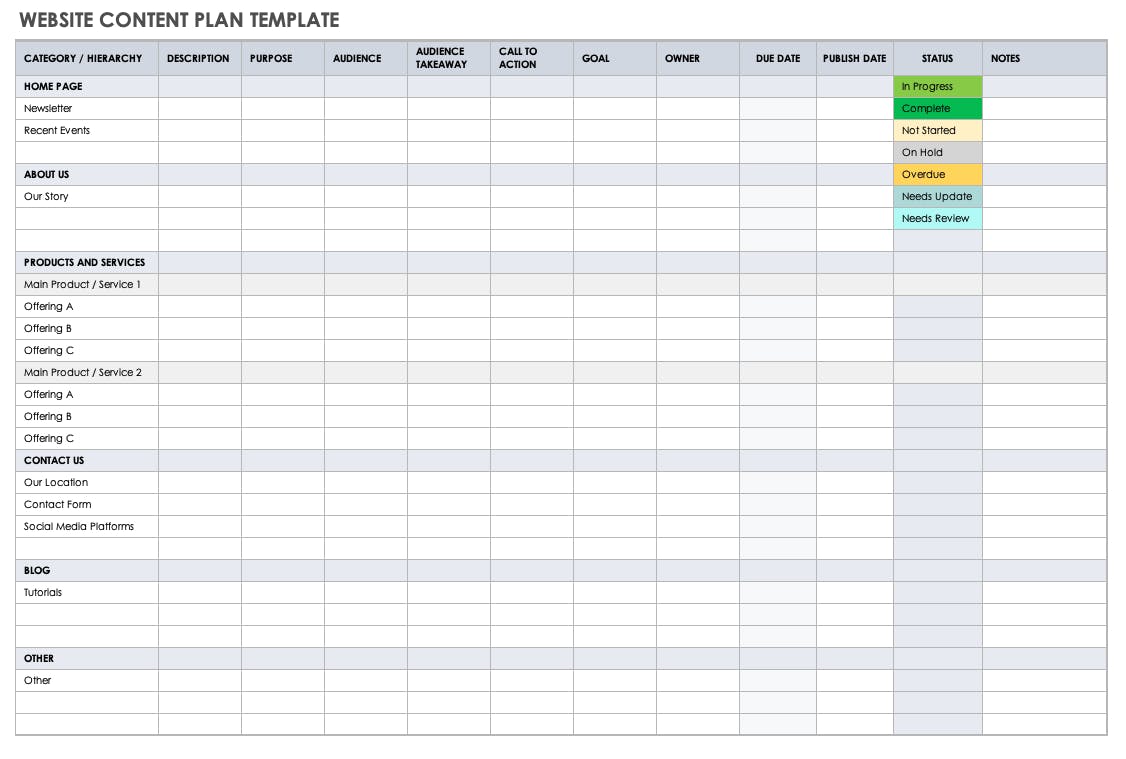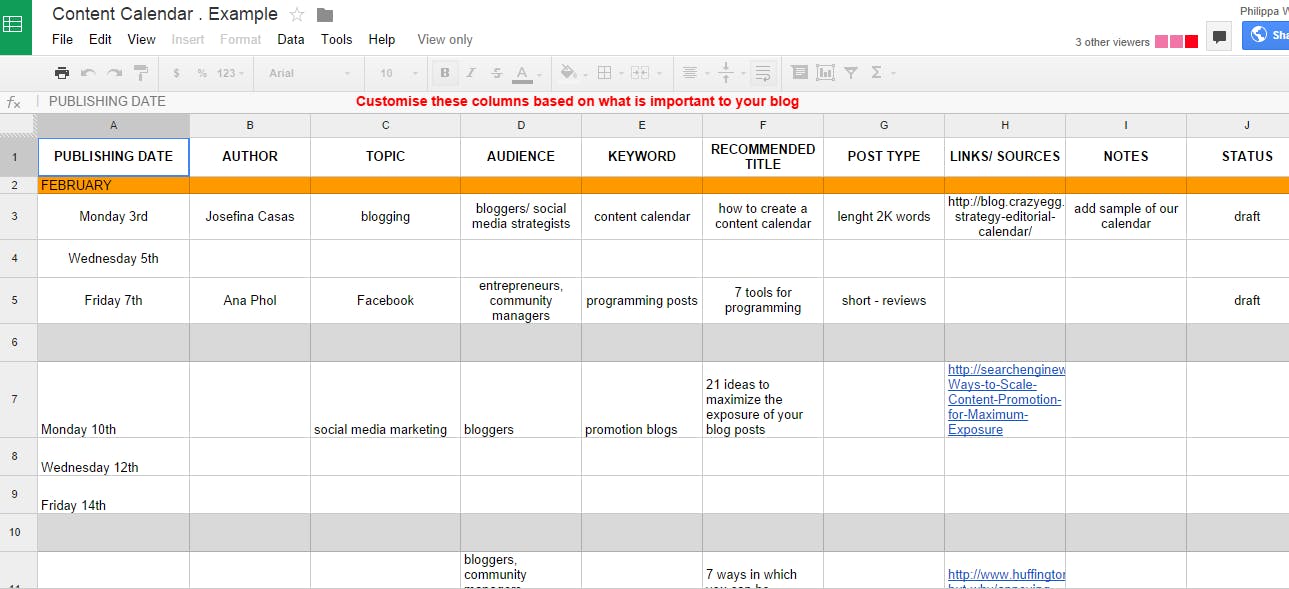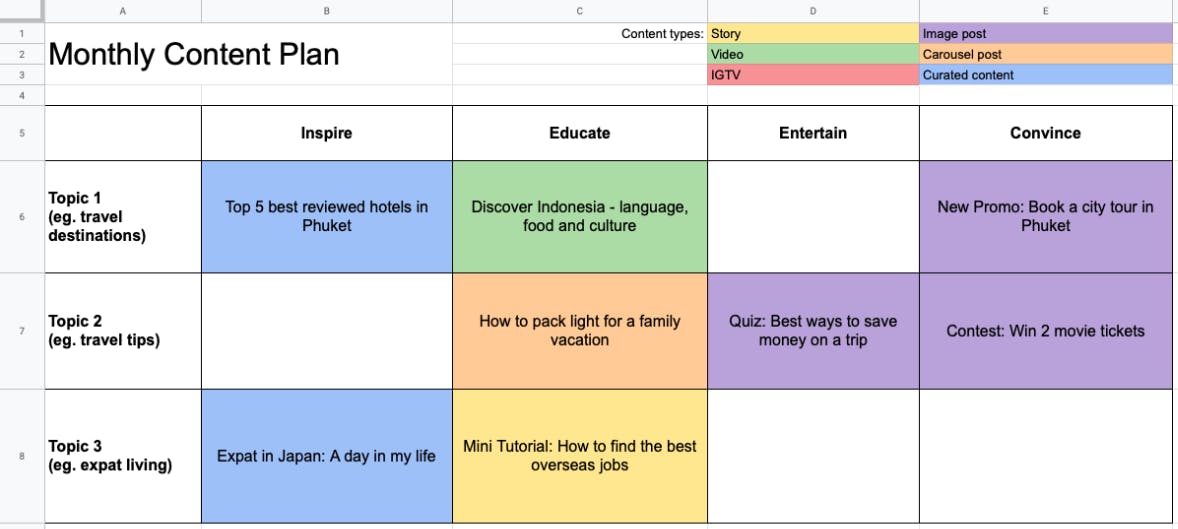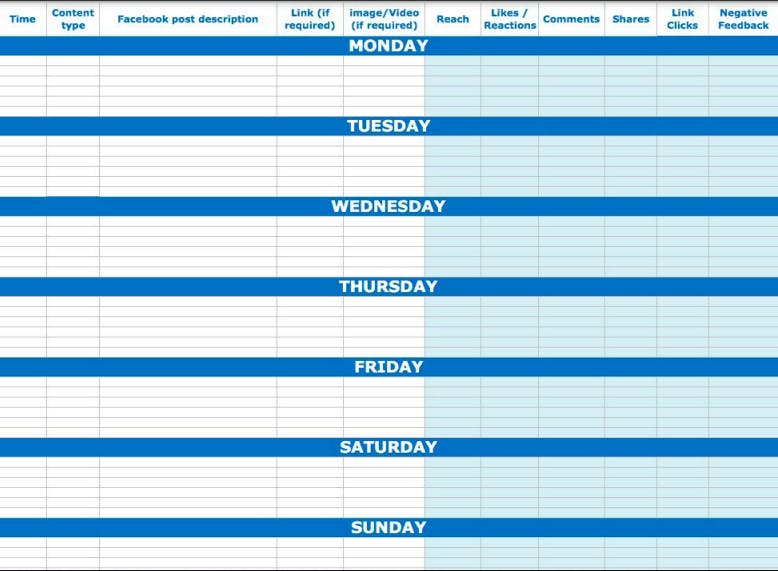Content plan: how-to, types and examples
Nov 3rd, 2021

Contents
What is a content plan?
Types of content plans with examples
How to create a content plan?
Conclusion
Content is always time-sensitive which means you need to get the right message to the customer at the appropriate time. Moreover, it is crucial to find a balance between informational, entertaining, and promotional content. The other critical aspect is the suitable frequency of publications. It is quite a challenge for any content creator to provide valuable content and at the same time advertise the products without being pushy and overwhelming. The content plan helps avoid difficulties and meet the audience’s needs.
A content plan is an essential tool for ensuring that your content marketing activities yield a positive return on investment. The documented content plan directs the company's marketing efforts toward meeting or exceeding the objectives of your go-to-market strategy. Plus, it helps visualize your goals and make predictions about the future.
What is a content plan?
Content plan is a document that maps out and summarizes the marketing assets, activities, and tasks related to content creation, distribution, and promotion. The content plan usually includes content deliverables, marketing channels, campaigns, key dates, and authors responsible for content creation. The document also defines the format for delivering the materials, specifies the writers and editors, determines the frequency of content updates, and indicates the deadlines. The core purpose of content planning is to outline every step of the content creation process required to achieve business objectives.
In contrast to the content strategy that highlights long-term goals and encompasses research and vision for the future, the content plan utilizes a much narrower tactical approach. The plan focuses on organizing, optimizing, and efficiently delivering publications. You can use the content plan to create, publish, promote and monitor the performance of each piece of content. Essentially, it details how you will execute the content strategy and the people in charge of each project.
A content plan is handy for any organization. It allows for informing every department of the company about future publications and creating a visual representation of how your content will be distributed over the upcoming weeks or months. The plan helps schedule your publications to align with major events or holidays, determine the content gaps, and ensure the materials are ready for publishing in advance.
Elements of content plan
The content plan comprises the following elements: content title, description, distribution channel, publication date, type of content, and designated people, including writer, editor, and graphic designer. The additional elements might include buyer journey stage, draft and editing due dates, opportunity or event, performance metrics, costs, and status. We will consider the most common elements of the content plan in greater detail below.
- Content title. This field usually contains the article topic, headline, audio, or video title. You can include a summary of the idea or put it in the description field. In the content title section, you can list the keywords and relevant terms if appropriate.
- Description. The following column of the table is intended for the key message, audiences, content goal, and call to action. In this field, you can add the structure of the article and the required number of words. The description can contain short notes concerning the content creation process if the piece needs fact-checking, organizing a photoshoot, or scheduling interviews.
- Type of content. This section can indicate the content format — blog post, podcast, a social media story, infographic, or email newsletter. You can also highlight the different content types in various colors for convenience.
- Distribution channel. Here you need to put the platforms and marketing channels you would use to distribute and promote the content. You can indicate paid media in a certain color.
- Publication date. This column will contain publishing deadlines. You can add two more columns with draft and editing due dates to enable content team members to coordinate their efforts and track changes.
- Author. This section of the content plan is dedicated to people responsible for creating the content — authors and copywriters. The content plan might also contain the fields intended for editors, proofreaders, translators, and other team members.
- Buyer journey stage. Before becoming a customer, the buyer goes through three main stages in the buying process: awareness, consideration, and decision. Take a look at our article about AIDA model to learn more on the topic. Every buyer journey stage demands a specific type of content. By adding the buyer journey stage into the content plan, you will better understand the target audience’s needs and create content tailored to these requirements.
- Opportunity or event. A content plan is a very convenient tool for tracking holidays and other important dates. If you add this section to the document, you will be able to prepare the content ahead of time.
- Performance metrics. You can use the content plan not only to schedule the materials but also to measure the performance of the content. The most crucial content marketing metrics often include traffic, engagement, SEO performance, number of subscribers and shares.
- Costs. In this field, you can track the expenses needed for content production and promotion.
- Status. There is a lot of content planning software to organize your content process. With the help of these tools, you can share the content plan with the team and track the status of each project — in progress, completed, not started, on hold, needs an update, or needs review.
Depending on the type of your content plan, objectives, and team size, you can make adjustments to the template and include additional elements. The following section will discuss the most common types of content plans and their fundamental components.
Types of content plans with examples
We have categorized the types of content plans according to the platform and the format of the content. Let us review the six most popular types of content plans and examples.
Website content plan
A typical website content plan includes the core set of elements: category or hierarchy, description, purpose, audience, call to action, central message, owner, due date, and publication date. Category or hierarchy field refers to a website structure that is often described as a tree. The website pages fall under three categories: parent page, child page, and grandchild page. When creating the website content plan, you need to add the categories according to the sitemap and choose the pages for each category to create a hierarchy.
As the website content targets various customer groups at different points of the sales funnel, you can include the fields with the tone of voice and buyer journey stage. For the same reason, each piece of the website content should have a goal. The goals will vary according to the buyer’s journey stages, content strategy, and business objectives. The website content is typically created for one of the following purposes: to increase awareness, to educate the audience, to rank on SERPs, or to boost the number of social media mentions.

In this example, the website pages are grouped according to the categories and hierarchy. Besides the standard fields containing description, purpose, audience, call to action, and deadlines, there is a section with audience takeaways. This is the primary point of the website article, which is crucial both for writers and readers of the piece. The takeaway enables the writer to focus on the essential ideas, emphasize them and structure the content piece around these concepts. At the same time, the readers will learn and remember the central points from the publication.
Blog content plan
Regardless of your blogging goals, the content plan for a blog always has several critical features. The blog content plan usually includes blog title, categories, content format, publish date, content owner, target customer, and content brief. Depending on your content strategy and business needs, you can use a basic or more detailed content plan. The structure of the blog content plan also depends on your content team’s size — whether this is a large department or a small group of individuals.
Blog title usually includes the keywords helping your blog article connect with your target audience. A content owner is a person responsible for the creation and publication of the post. This could be a writer, editor, or content manager. The content brief might include the useful information required to create the article, like the outline for the article, relevant references, word count, related topics, and other data.
The well-balanced categories are crucial for SEO. If you include the categories section in your blog content plan, you can make sure that you have an equal number of blog posts in each category. Plus, the field with relevant seasonal events, product launches, and holidays will help you plan the content around the fixed dates.

The example contains the basic elements of the blog content plan. In addition to the essential elements, the scheme includes keywords, recommended title, post type, and sources. As we can see from the example, the blog has a diverse audience, so it is represented in the table. The section with the post type contains information about the format and number of words. Finally, the plan uses the notes field for remarks for authors, editors, and designers.
Instagram content plan
Instagram is the social media platform where visual content plays a major role. Therefore when planning the content, you need to pay attention to the cohesiveness between images, stories, and written content. This should be reflected in the content plan. In addition, you need to keep in mind the consistency in the style that includes language, tone of voice, colors, themes, and filters. Thus, besides the standard elements, the Instagram content plan should contain content pillars or topics relevant to your industry, content types, post formats, trending, general and niche-specific hashtags, and performance metrics.
You can create the Instagram content plan based on the VALUE model or the content types. It is the acronym that stands for several content categories:
V — valuable or educational content that teaches the readers some new information.
A — aspirational or motivational posts, encouraging the audience to achieve goals.
L — a lifecycle or content that raises awareness, inspires people to take action, and fosters relationships.
U — unique articles associated with a brand.
E — evergreen publications that would still be relevant in the future.

This monthly Instagram content plan is based on the main content pillars and types. The content pillars are the main topics or the fundamentals for creating the publication ideas. For example, in this content plan for a travel agency, the main focus areas are travel destinations, travel tips, and expat living. The content types fall under four categories: inspirational, educational, entertaining, and convincing publications. This categorization will help you create content that meets customer needs and makes followers interact with the posts.
Facebook content plan
To create Facebook posts that generate high engagement, you need to remember three Cs: compelling images, captivating headlines, and catchy call-to-action. Besides these elements, you might include the content type, Facebook post description, link, and hashtags. Finally, if you are going to track the performance of the publications, you might add the sections with reach, likes, clicks and shares, comments, and negative feedback.
Time-sensitive events such as holidays, contests, events, and company milestones are the perfect occasions to create the content, so you can also add this field to the content plan. You can develop a Facebook content plan based on the content types as in the example with the VALUE framework we described earlier. You can divide the content plan into several types: owned, curated, and promotional content sections and organize your schedule according to this model.

The weekly content plan for Facebook is designed for preparing publications with visual content. There is a column for links if you are going to share the one with the post. If the publication requires images or videos, there is a field for adding the filename. The right side of the table is designed for measuring the results to understand what works better for the readers.
General social media content plan
The general social media content plan typically includes the current events and trending topics, industry trends and consumption preferences, target audience personas, goals, featured content points, perfect velocity, tone and rules of engagement, assigned people, call to action, and metrics. You might also include keywords and hashtags, advertising opportunities, and potential distribution partners.
Featured topics are the themes and ideas that would evoke interest in the readers. Perfect velocity refers to the timing and frequency of publications. In the tone and rules of engagement field, you might describe the conversation style and requirements for posts, such as a minimum/maximum number of words, visual guidelines, and other criteria. The potential distribution partners section mentions influencers or specialists who can help you promote the website or blog. At last, in the advertising opportunities, you can indicate paid campaigns and tools to promote the content.

The social media content plan is designed for the most popular social media platforms, including Facebook, Instagram, TikTok, YouTube, and Pinterest. It can be aligned to the overall social media strategy as it contains benefits and goals to be achieved through content creation. This content plan allows for preparing content separately for each platform, taking into account the appropriate frequency of publications, format, and content type. With this plan, you can also track KPIs and monitor the results.
Video content plan
When developing the video content plan, you can use several content categories as a basis. We will consider the following classification: inspirational, educational, and entertaining content. The content plan can group the videos according to these categories and video types, such as how-to videos, product tutorials, explainers, interviews, invitations to events, and others. You can add the section with main channels for video integration, including blogs, social media platforms, and websites.
Team, budget, and timeline are the other essential sections of the video content plan. The video content creation process requires making a storyboard and outline, working on a script, filming, and editing. So, you can develop the video content plan based on the pre-production, production, and post-production stages. Thus, the required sections of the content plan include the purpose of the video, title and idea, description, the links to the script and storyboard, the format, channels, target audience and objectives, core message, video production brief, keywords, and KPIs.

The video content plan in the example is based on the stages of the sales funnel. It covers the main aspects of content production and distribution, including category, content topic, people responsible for content creation, estimated release date, and platforms. The audience takeaway is a core message of the video the audience should remember, the information you want the target customers to understand.
How to create a content plan?
Before developing a content plan, it would be best to have a well-defined content strategy. Developing both a content strategy and content plan is a typical task of the content strategist. Then, having the vision and strategy in place, you can proceed with the following six steps.
Define your objectives
One of the most crucial components of developing the content plan is determining the long-term and short-term goals. Use the SMART model to ensure that your objectives are specific, measurable, achievable, realistic, and time-bound.
The content plan will help you achieve the following goals: raise brand awareness, increase the number of website visitors, turn the prospects into customers and improve customer retention. In addition, by having clear goals, you will be able to measure and estimate content marketing success.
Create buyer personas
Analyze your target audience to develop buyer personas. Pay attention to their demographic characteristics, buying behavior, pain points, and preferred type of content. Collect as much information as possible about your customers so you can better understand who they are and how to engage with them. Then, use web analytics tools and conduct market research.
Discover where your target audience spends their time once you've figured out their preferences and demographic features. If you're distributing your publications through numerous channels, such as email, website, and social media, your content plan should target multiple audiences.
Come up with content topics
Think of the topics that might interest your target audience and brainstorm these ideas with the content team. Once you develop the content points, you can decide on the formats and content types that will convey your ideas in the best way possible.
Look at your competitors’ content to understand what works best for your audience. Search for the top content in your industry. Pay attention to the content types and formats that rank high in search engine results pages. Consider what forms of content have proven to be effective on your distribution channels.
Make an editorial calendar
An editorial calendar helps the content team plan their work on a daily, weekly, and monthly basis. With an editorial calendar, you can track publication dates, content categories, distribution channels, and content authors. The calendar will also be useful for your marketing team to manage content, align the topics, and streamline your work. Editorial calendar and content plan can be merged into one document for smaller content teams or split into two separate documents for a larger operation.
Choose the channels
Decide on how you will distribute the content and what platforms you will use for this purpose. When choosing the distribution channels for your content, consider the different types of platforms, including owned, earned, and paid media.
Owned channels usually belong to your company and include the official website, blog, and social media accounts. Earned channels refer to free promotion, such as publications in specialized media. Lastly, paid channels cover the partnerships and sponsored social media campaigns. Then choose the top channels and prioritize the platforms that will help you achieve your objectives. We should also note, that the published content can and should be promoted multiple times as part of your lead nurturing strategy.
Measure the results
The last step is to measure and analyze the performance of your content to improve the content plan. Once you've started producing articles, you'll need to develop a strategy for tracking results. Evaluate your content performance after publication at regular time intervals. Examine the specific metrics relevant to your content types and channels.
Conclusion
A content plan is a vital tool for creating valuable content that interests your audience. It is a visual representation of your main objectives. You should be able to provide content that accurately communicates the positioning of your product and brand regardless of where your customers are in the sales funnel. The content plan enables you to keep focused at every stage of their journey, making sure the customers receive relevant information at the right time.
